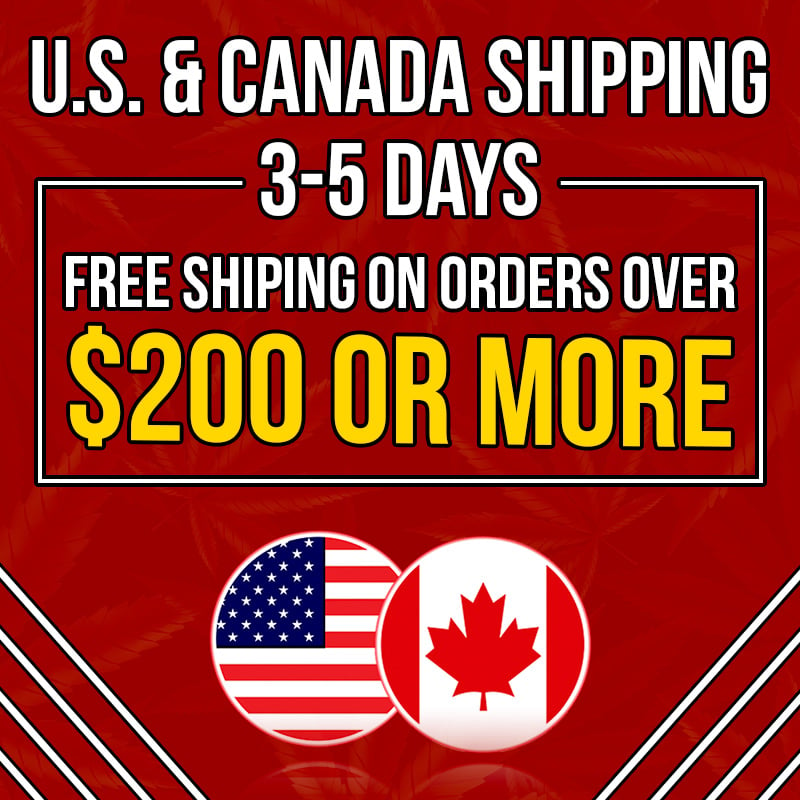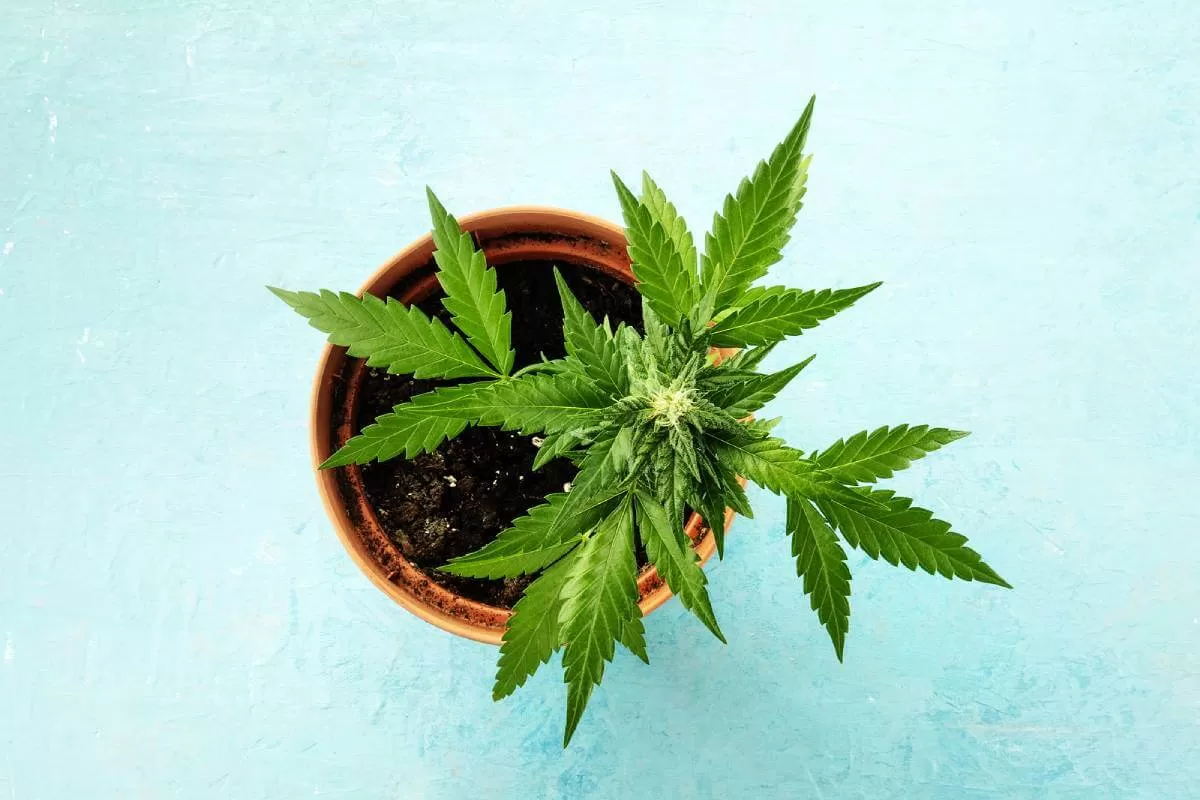


One of the most common questions of first-time cannabis growers is, “How many marijuana seeds do I plant per pot?”
The simplest answer to your question is: The ideal way to grow cannabis plants is one plant- one pot rule. But there are some instances when you can grow more in one pot. Let’s explore why.
The rule is simple: you place one seed in one pot. You see, cannabis plants are annuals, which means that these plants only grow in a short time. Cannabis seeds will sprout, veg out, bloom, and be ready for harvest in just two to three months. Thus, you need to give these annuals enough space as well as enough care to grow healthy and produce good yields. Aside from this, placing plants in individual pots also has several advantages.
For most marijuana growers, one seed per pot rule is the standard for growing cannabis. This is because of its many advantages.
With the one-pot per plant rule, your cannabis plants can grow better and healthier root systems. Every grower knows that healthier roots contribute to the overall health and wellness of plants. Roots can move deeper into the soil and take in water and nutrients. The roots will also take in more oxygen as this benefits its overall growth as well.
Because of the one plant per pot system, your plants will get the most out of their genetic abilities and grow taller, wider, produce more buds, and grow bigger and denser buds as well.
Growing more plants in one pot, even if this is a big pot, will only make your plants compete for nutrients and water. And if you think adding more nutrients and watering more often can help, it may not be as easy as it looks.
Your plants may end up suffering from nutrient excess as a result of more nutrients. More water can result in over-watering, and this is not good for plants as well. This is why one plant per container is still the best practice.
A general rule for plants suspected of having pests or mold is to isolate the plant to protect other plants in the garden or nursery. But how can you do this if you’re growing in one pot? When you grow your plants in individual pots, you can take a diseased or pest-infested plant and separate it from others for treatment. This makes treatments cost less and is easier to manage rather than treating several plants at the same time.
If a specific plant needs treatment for a nutrient problem, say an excess nitrogen problem, you don’t need to treat other healthy plants. Also, consider that treatments for nutrient problems are usually done by flushing the soil with plain, pH-balanced water. When you separate the affected plant, you can continue giving the fertilizer product in smaller doses to stop excess nutrient problems.
When your plants are grown in individual pots, you can easily remove males during the final weeks of the vegetative stage. Removing males in a growing area helps avoid accidental pollination, especially if you want to grow weed.
Despite its many advantages, there are also some disadvantages of growing cannabis in one plant per pot rule. Consider the following:
Growing only a wee plant in a large pot is indeed a waste of space. In a small growing area, like a standard growing cabinet, you may only grow three or four plants, whereas you can cultivate more if you grow three plants in a large pot.
A one-pot per plant rule is more expensive because you will need more pots and stronger and more efficient lighting to cater to all your plants. You may also end up growing only a small number of plants because you’re conserving space.
You may need to buy a second tent or cabinet growing area instead and add the resources you need to manage two or more growing areas.
How many marijuana seeds to plant per pot? Growing in a one seed per pot manner may not be as simple as you think. Here are some tips to improve your plants’ growth.
As with all kinds of cannabis growing activity, you need to use only the best soil. Now the best soil can be your own garden or yard soil or commercially-prepared soil as long as it has a balanced pH (not acidic or basic) and it contains good nutrients coming from organic matter. Also, consider soil aeration. If your soil is too packed, water and air can’t come in to nourish the roots. Using sandy-clayey soil is our best choice as this type of soil can retain more water and fertilizer due to its clay component, plus it can also drain excess water and soil thanks to its sandy component. Remember: by using the right soil, you are a step closer to growing healthier and stronger plants.
The best seeds should be from cannabis strains that are easy to grow, a strain that does well in soil, and a strain that will grow in your kind of environment. Even if you follow the one seed, one-pot rule, you are likely to fail if you don’t consider the qualities of the seeds you want to grow, so don’t overlook this step.
Even if you’re growing one seed per pot, you must also consider the type of pot to use. Most importantly, will the strain you wish to cultivate grow well in the size of pot you want to use? We recommend using a large and deep pot with a capacity of 3 or more gallons. A deeper and larger pot benefits the roots, and this will help boost plant health.
The type of pot matters as you want one that can hold the soil as well as hold water and nutrients. There are all kinds of pots available: ceramic pots, clay pots, plastic pots, fabric pots, and many more.
Providing good fertilizer and supplements is a way to keep marijuana plants healthy and blooming plants to create large and dense buds. A general rule in applying fertilizer and supplements to cannabis plants is to use fertilizer products appropriately. There are products made for cannabis in the growing stage and products made for the flowering phase. By carefully following the instructions on these products, you can support the nutrient needs of your plants in all phases of their growth.
Water your plants when the soil is dry and not when the soil is moist or wet. Water during the early morning when the sun is not as hot because plants need to take in more water. Also, consider the watering needs of each strain. Some may only require every two days, while some need constant watering.
A few marijuana growers prefer to grow their plants in one pot. Well, aside from using a very large and wide pot, they were able to pull this through with regular trimming and pruning to help the plants grow well in one container.
A pot with two or three plants may work, but you need to plan your growing very well. Before you start growing several plants in one pot, consider the advantages and disadvantages first.
Take note of the advantages of using multiple seeds per pot rule.
By growing in one pot, you can conserve space. But as we said before, you need a large pot to grow more seeds in one pot. You also need a larger growing space, cabinet, or tent to hold a large pot.
You need male and female plants to breed. Growing your seeds near each other in a large container makes it easier for pollen from male plants to reach female plants to pollinate them.
You can grow seeds with ease. Just let male plants grow beside female plants. You will grow many seeds enough to last you for many more years of growth.
With your plants together in one pot, you can care for them better, as you can easily monitor them.
Consider the following disadvantages of cultivating plants in only one pot.
If you plan to grow weed for personal consumption using regular strains, this setup won’t be able to prevent pollination. It will be hard to separate males from female plants as these are stuck in one large pot.
Several plants in one pot will only compete for food, water, and nutrients found in soil. If you grow three plants in one pot, it’s likely that one or two plants will give way. One plant will dominate and absorb more nutrients and water. And even if you add more nutrients to counter this possibility, this can also be harmful to your plants’ health as nutrient toxicity may happen.
If one plant in a pot of three or four becomes sick, it would be hard to remove the plant and quarantine it. It’s also hard to treat this affected plant, and thus all the other plants can be affected in no time.
A large pot is likely to crowd your growing area as well. So instead of having three or more pots with one plant in each pot inside a small growing cabinet, you will only be limited to cultivating only a few plants in one ginormous pot.
Growing multiple plants in one pot is a challenge because it is less likely done by growers. Remember the following tips:
If you really want to proceed with growing more seeds in one pot, make sure you get a large pot. This must be made of durable materials like clay to ensure that it can hold the number of plants you want to grow. We also recommend using a fabric bag because it won’t break or give in to the weight of all the plants you want to grow. The roots won’t be drowned in a fabric pot as it will also drain excess water and fertilizer better than other types of pots. Also, fabric bags are available in different sizes to fit the number of plants you want to grow.
Just like growing cannabis on a 1:1 basis, you need the best soil, preferably soil that aerates well. The best soil that we recommend for all cannabis growing activity is sandy, clayey soil. This soil will absorb water and fertilizer better and will drain excess water and fertilizer as well. Also, consider that this soil aerates well because of its sandy components. Oxygen will pass through better in sandy-clayey soils, which will enhance the growth of your plants in one pot.
As much as possible, grow only small plants or plants that you think will grow well in this setup. Small plants like Indica varieties or autoflowering varieties will be perfect because these are tiny and compact plants. Don’t cultivate sativas or sativa-dominant hybrids since these plants require a larger growing space and a larger pot because of their size and height.
To better check on your plants and prevent pests, poor weather, and climate conditions, cultivate your plants indoors. This way, you can tweak lighting to work on your plants. Cannabis plants that are grown at a very small distance from each other will only be very crowded, and thus smaller buds won’t be reached by light. Enhancing lighting in the right areas will help develop more buds and, in turn, will boost your harvest and yields. Use the best and the brightest kind of lighting, but don’t forget about too much heat build-up inside the growing area.
We hope we helped answer your question about how many marijuana seeds to plant per pot. We know you have more questions in mind, especially if you’re new to growing weed. And as far as getting answers for all these, it may not be easy, but there are ways to get practical answers to your everyday cannabis growing. You may check out growing guides, watch growing videos, and read bibles and diaries before you buy marijuana seeds when you start your growing journey. We recommend that you document your growing project so you can help other beginner growers with their growing questions in the future.



Best Selling
Feminized Seeds
Regular Seeds
Customer Help
WE SELL MARIJUANA SEEDS IN THE USA
Best Selling
Feminized Seeds
Regular Seeds
Autoflowering
Customer Help
WE SELL MARIJUANA SEEDS IN THE USA